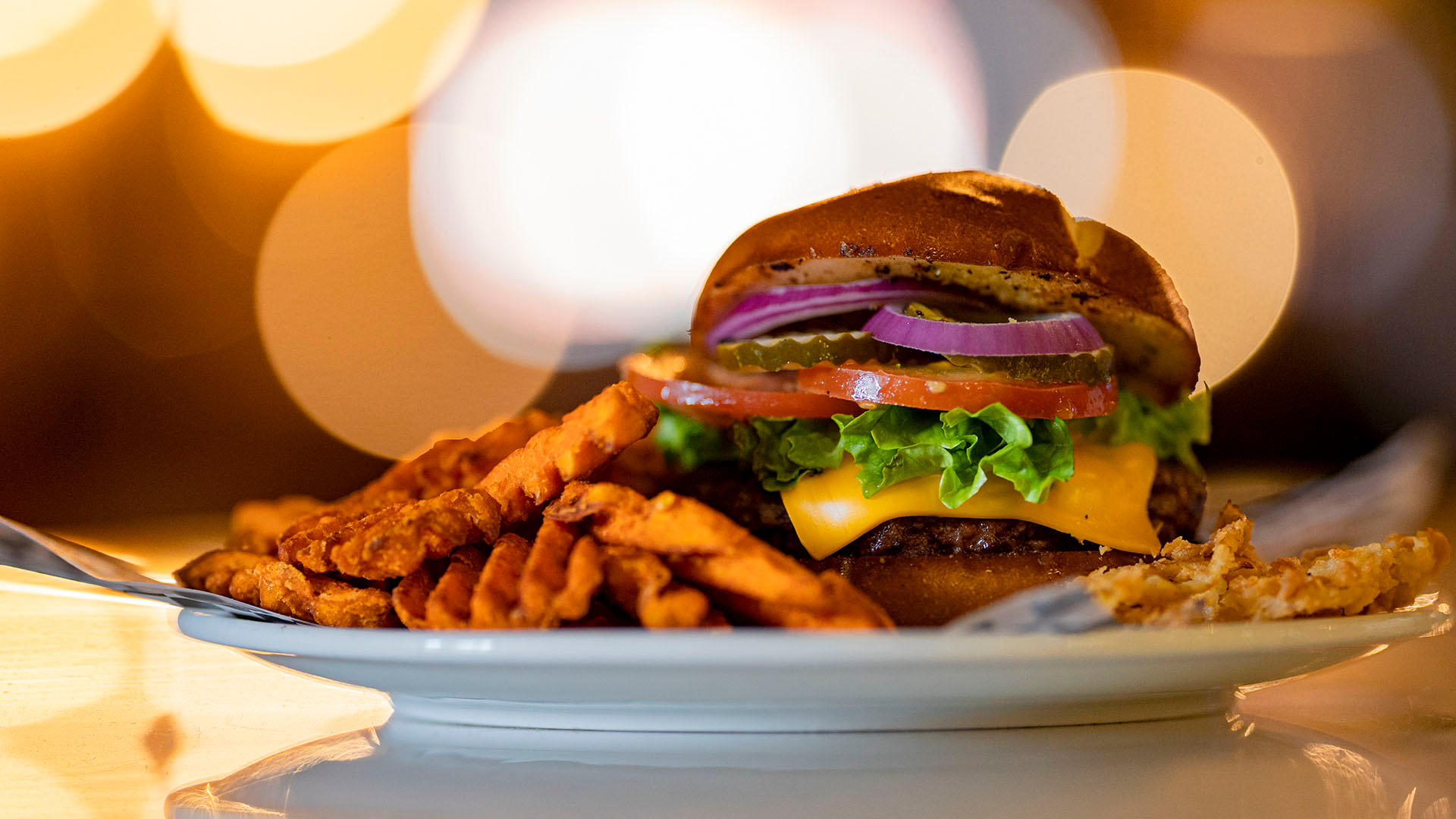Home Is Where The Bison Burgers Roam
While plant-based patties and mushroom burgers may get the rest of the country excited, the Western part of the U.S. has been digging into non-beef burgers for decades. In Montana, where I live, bison burgers are a local delicacy that isn't confined to steakhouses or farm-to-table restaurants; they're on the menu at chain restaurants and sports bars alike. Visitors always want to try the bison burgers, as few proteins conjure such a vivid sense of place: the plains! the mountain valleys! the cowboys!
I've struggled to explain what it is that makes bison burgers so special. Yes, bison—don't call them buffalo, song be damned—are native to the American West, and in fact there's a bison ranch visible from the highway just south of my town of Missoula that paints the Western pastoral scene quite effectively. Huge, furry humps dot the pastures while the cottonwood-lined Bitterroot River snakes through the background. But what's the appeal of the bison burger beyond checking a box off your Montana bingo card? Surely there's more to appreciate about bison meat than its Western novelty.
First and foremost, bison meat tastes good. It's difficult to describe the subtle variations in the flavors of meats, but bison isn't terribly far off from beef, just with a bit more intensity, a slightly sweet and ferrous depth that beef doesn't have. Bison is also much leaner than beef—it's even leaner than salmon and skinless chicken—so overcooked burgers hold the potential to taste like charred leather. If you've had the chance to eat game meat, bison falls somewhere between venison and beef.
"I would compare it closely to elk meat," Candy Westre, partner in Bitterroot Bison in Missoula, Montana, tells me. "It's kind of a richer meat as well."
The lean nature of bison meat means some restaurants will add fat to the ground meat to hold a burger together, but it's not necessary so long as you don't cook the burger all the way through. A 100% bison burger is fairly common at restaurants—just don't order it well done.
Beyond the rich, slightly sweet flavor of the meat, bison has also seen its popularity grow thanks to consumers' animal welfare concerns. Bison ranching is a minute industry compared to American beef production, so it retains the feeling of small-scale, independent farming that much American cattle hasn't. According to Jim Matheson, assistant director of the National Bison Association, America processes roughly 125,000 beef cattle every day, while bison ranchers process roughly 60,000 total bison per year. It's why Ted's Montana Grill is the only reasonably sized chain to carry bison burgers; that's all the current bison industry can supply. "We don't have the capacity to be at McDonald's or Fuddruckers," Matheson says.

And that's how most bison ranchers prefer it. Bison are raised much differently from cattle, which makes scaling them up to McDonald's levels unrealistic. Bison are still wild, not domesticated, and live in much the same way they would have before the arrival of colonial settlers—albeit on much smaller parcels of land.
"They're fenced but they're wild. That's kind of oxymoron but it's true," says Westre, whose herd comprises roughly 200 bison fed entirely on grass, not grain. "They're pretty hands-off. They don't need a lot of coddling; they just need food. ... We don't need to sit out there and monitor them."
Conventional cattle generally require more interventions throughout their lives than bison do, she says. Bison cannot be administered antibiotics or hormones, and they don't require human assistance to conceive or give birth. Bison are also not artificially inseminated or castrated. Matheson says the goal is to intervene as minimally as possible.
"Bison were never domesticated. The animals you see on a ranch are wild animals, essentially. What we do is try to utilize their instincts to our advantage," he says. "We figure if they're left alone on their own, that's about as natural as you can get."
Bison meat's "natural" image is what originally sparked a domestic market for it beginning in the 1960s, Matheson says, and consumer interest has grown steadily since then. A downturn in the cattle market in the '90s as well as Ted Turner's very public interest in bison ranching helped launch it closer to the mainstream.
"In the early 2000s, we hitched our wagon to the natural food channel and that's been a perfect fit," he says. "We haven't grown fast, and we like that."
Today, the industry sells roughly half its product to food service and the other half at retail; unlike other food products, much of the bison produced in the U.S. is sold directly to consumers through farmers markets, CSAs, and shops directly on ranches. (There National Bison Association even created a new app to help facilitate that.)
It seems bison consumers are as likely to be drawn in for the meat's natural image as they are for its flavor—or because it's their first time to the Mountain Time Zone and they want to say they had the a cowboy experience. Under the surface though, bison meat is much more hippie than it is cowboy—just don't tell all the Stetson-clad tourists that.
